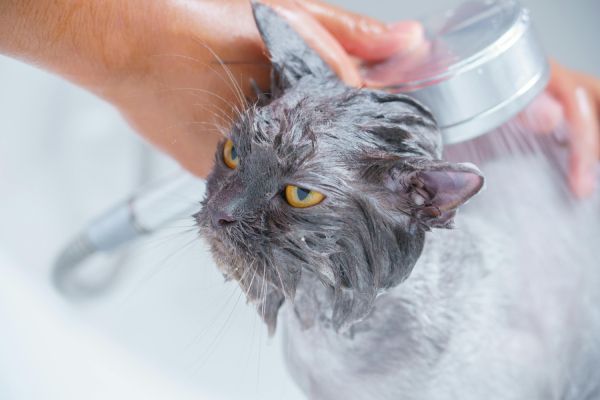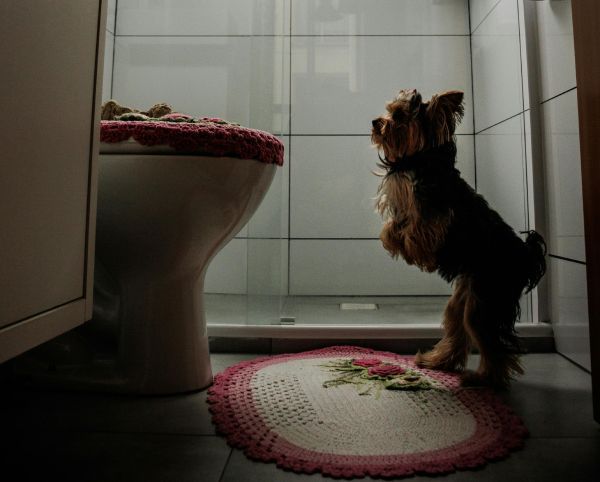Master Plumbers Blog
Pet-Proof Your Plumbing With These 8 Tips and Strategies
As a pet owner, it’s natural to want your home to be a safe and comfortable space for you and your furry companions. This means being more thoughtful about every part of your home—including your plumbing. While it may not be the first thing that comes to mind, your plumbing can pose hidden risks to pets and be vulnerable to damage in return. For instance, pets can shed fur that clogs drains or chew on exposed pipes. In some cases, young or small pets may see open pipes as fun hiding spots, which can lead to serious trouble for both your plumbing and their safety.
Fortunately, with a few proactive measures, you can protect both your home’s plumbing and your pet. Sometimes, simple DIY fixes are enough, but there are instances where you might need professional assistance. If you're unsure how to secure and pet-proof your plumbing, consult professionals in your area.
The plumbers Dunedin residents trust are more familiar with the local plumbing systems.
In the meantime, you can start adopting these practical tips for safeguarding your plumbing while keeping your pets safe.
1. Install Drain Guards to Prevent Clogs
Pets, especially those with long fur, shed significantly during different seasons. When their fur and dander get caught in the drains while you’re washing your pet, it can lead to troublesome clogs. To prevent this, install drain guards in bathtubs and showers. These simple mesh covers catch hair and debris, allowing water to flow freely while reducing the risk of blockages.
2. Cover or Secure Exposed Pipes
Some pets, particularly puppies and kittens, have a natural instinct to chew. If they get hold of exposed pipes, they can cause serious damage, leading to leaks or burst pipes. If you don’t want this to happen, cover any exposed plumbing with pipe insulation or protective coverings. This safeguards your plumbing and protects your pet from potential injury.
3. Discourage Digging Near Outdoor Plumbing
Many outdoor-loving pets, particularly dogs, enjoy digging in the garden. Typically, this won’t be a problem unless there are underground pipes nearby. If your pet digs too close to water or sewer lines, it could accidentally damage them, resulting in injuries and costly repairs. As a precaution, provide a designated digging area, such as a sandbox, to redirect their behaviour. You can also use deterrents, like citrus peels or motion-activated sprinklers, to discourage digging near sensitive areas.
4. Be Mindful of What You Flush
Many pet owners mistakenly flush pet waste, cat litter, or pet wipes down the toilet. However, even if some products are labelled as “flushable,” they can still contribute to blockages in your plumbing system. Unlike human waste, pet waste and litter do not break down easily and can cause serious issues in pipes and septic systems. As such, always dispose of pet-related waste in a bin rather than flushing it down the toilet.
5. Keep Toilet Lids Down
Some pets have a habit of drinking from the toilet bowl. Aside from being unsanitary, this behaviour can also be potentially dangerous if you use toilet cleaning chemicals or fresheners that contain toxic ingredients to animals. To keep your pets from ingesting toilet water, keep toilet lids closed at all times. It’s also a good idea to ensure your pet has access to fresh, clean water in their own bowl to reduce their interest in drinking from other sources.
6. Monitor Water Bowls and Prevent Overflows
The placement of your pet’s water bowl can also become a plumbing issue. Placing it too close to plumbing fixtures can lead to accidental spills that seep into floorboards or walls, causing moisture build-up and potential damage. With this in mind, consider placing water bowls in areas with waterproof mats to prevent spills from affecting your floors. If your pet tends to splash while drinking, use a spill-proof water bowl to keep the surrounding area dry.
7. Protect Washing Machine Hoses
Whenever you wash pet bedding, towels, or clothing covered in fur, you put your washing machine at risk of blockages. In addition, some pets may chew on washing machine hoses, which can lead to leaks. In these situations, regularly cleaning out the washing machine filter can help remove pet hair from filters. You can also install reinforced steel-braided hoses to prevent any damage from chewing or scratching.
8. Regularly Check for Leaks or Plumbing Issues
Pets can sometimes cause unnoticed plumbing problems, such as small leaks caused by scratches on pipes. So, it’s best to periodically inspect your home for signs of water damage, such as damp spots, mould, or an unexplained increase in your water bill. Catching these issues early can save you from more significant repairs down the track.
Pet-proofing your plumbing is an essential step in keeping both your pets and your home safe. Fortunately, most of the time, preventive measures and DIY strategies can help avoid costly plumbing repairs and ensure your furry friends stay out of harm’s way.
If you suspect a plumbing issue caused by your pet, it’s always best to consult a professional. Our experts here at Mains Plumber can help assess and fix any problems before they become major concerns. Whether you need repairs, pipe reinforcements, or expert advice on pet-proofing your plumbing, don’t hesitate to reach out to us. We also offer emergency plumbing services for immediate concerns.







